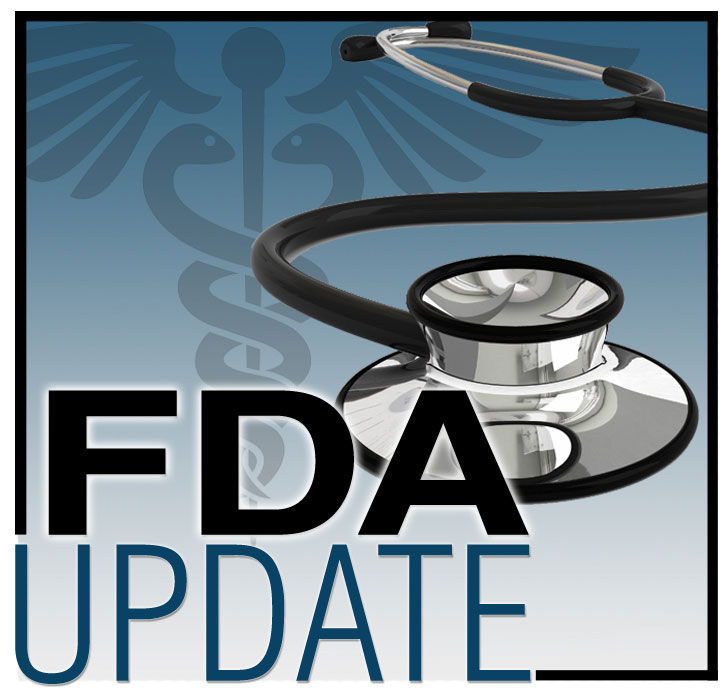- U.S. Food and Drug Administration (FDA) (http://dev-voice.ons.org/topic/us-food-and-drug-administration-fda)
- Melanoma (http://dev-voice.ons.org/topic/melanoma)
- Clinical Practice (http://dev-voice.ons.org/topic/clinical-practice)
- Oncology Drug Research (http://dev-voice.ons.org/topic/oncology-drug-research)
FDA Approves Melphalan as a Liver-Directed Treatment for Uveal Melanoma
On August 14, 2023, the U.S. Food and Drug Administration approved (https://www.fda.gov/drugs/resources-information-approved-drugs/fda-approves-melphalan-liver-directed-treatment-uveal-melanoma) melphalan (Hepzato™) for injection or hepatic delivery system (Hepzato Kit) containing melphalan as a liver-directed treatment for adult patients with uveal melanoma with unresectable hepatic metastases affecting less than 50% of the liver and no extrahepatic disease, or extrahepatic disease limited to the bone, lymph nodes, subcutaneous tissues, or lung that is amenable to resection or radiation.

Efficacy was evaluated in the FOCUS study (NCT02678572), a single-arm, multicenter, open-label trial in 91 patients with uveal melanoma with unresectable hepatic metastases. Limited extrahepatic disease in the bone, subcutaneous sites, lymph nodes, or lung was permitted if the life-threatening component of the uveal melanoma was in the liver and the extrahepatic disease was amenable to resection or radiation. Key exclusion criteria were metastases in at least 50% of the liver parenchyma, Child-Pugh class B or C cirrhosis, or hepatitis B or C infection.
The main efficacy outcome measures were objective response rate (ORR) and duration of response (DoR) as assessed by an independent central review committee using RECIST v1.1. ORR was 36.3% (95% CI = 26.4, 47), and median DoR was 14 months (95% CI = 8.3, 17.7).
Melphalan is administered via the device’s constituent part, the hepatic delivery system, by infusion into the hepatic artery every six to eight weeks for up to six total infusions. The recommended melphalan dose is 3 mg/kg based on ideal body weight, with a maximum dose of 220 mg during a single treatment.
The prescribing information for melphalan for injection or hepatic delivery system has a boxed warning for severe periprocedural complications, including hemorrhage, hepatocellular injury, and thromboembolic events. The prescribing information also has a boxed warning for myelosuppression with a resulting severe infection, bleeding, or symptomatic anemia.
Melphalan for injection or hepatic delivery system is available only through a restricted program under a risk evaluation and mitigation strategy (REMS) called the Hepzato Kit REMS because of the risk of severe periprocedural complications, including hemorrhage, hepatocellular injury, and thromboembolic events.
The most common adverse reactions or laboratory abnormalities reported in at least 20% of patients treated with melphalan for injection or hepatic delivery system were increased alanine aminotransferase, prolonged activated partial thromboplastin time, increased aspartate aminotransferase, increased blood alkaline phosphatase, thrombocytopenia, fatigue, anemia, nausea, musculoskeletal pain, leukopenia, abdominal pain, neutropenia, vomiting, and dyspnea.
Melphalan and melphalan for injection or hepatic delivery system are contraindicated in patients with active intracranial metastases or brain lesions with a propensity to bleed; liver failure, portal hypertension, or known varices at risk for bleeding; surgery or medical treatment of the liver in the previous four weeks; uncorrectable coagulopathy, inability to safely undergo general anesthesia, including active cardiac conditions including, but not limited to, unstable coronary syndromes (unstable or severe angina or myocardial infarction), worsening or new-onset congestive heart failure, significant arrhythmias, or severe valvular disease; history of allergies or known hypersensitivity to melphalan; history of allergies or known hypersensitivity to a component or material in melphalan for injection or hepatic delivery system, including history of allergy to natural rubber latex; history of allergy or hypersensitivity to heparin or presence of heparin-induced thrombocytopenia; and history of severe allergic reaction to iodinated contrast not controlled by premedication with antihistamines and steroids.
The review used the Assessment Aid (https://www.fda.gov/about-fda/oncology-center-excellence/assessment-aid), a voluntary submission from the applicant to facilitate the FDA’s assessment.
The application was granted orphan drug designation. FDA expedited programs are described in the Guidance for Industry: Expedited Programs for Serious Conditions—Drugs and Biologics (https://www.fda.gov/regulatory-information/search-fda-guidance-documents/expedited-programs-serious-conditions-drugs-and-biologics).
Healthcare professionals should report all serious adverse events suspected to be associated with the use of any medicine and device to FDA’s MedWatch Reporting System (https://www.accessdata.fda.gov/scripts/medwatch/index.cfm) or by calling 800-FDA-1088.
For assistance with single-patient investigational new drug applications, contact Oncology Center of Excellence’s Project Facilitate (https://www.fda.gov/about-fda/oncology-center-excellence/project-facilitate) at 240-402-0004 or email OncProjectFacilitate@fda.hhs.gov (mailto:OncProjectFacilitate@fda.hhs.gov).
